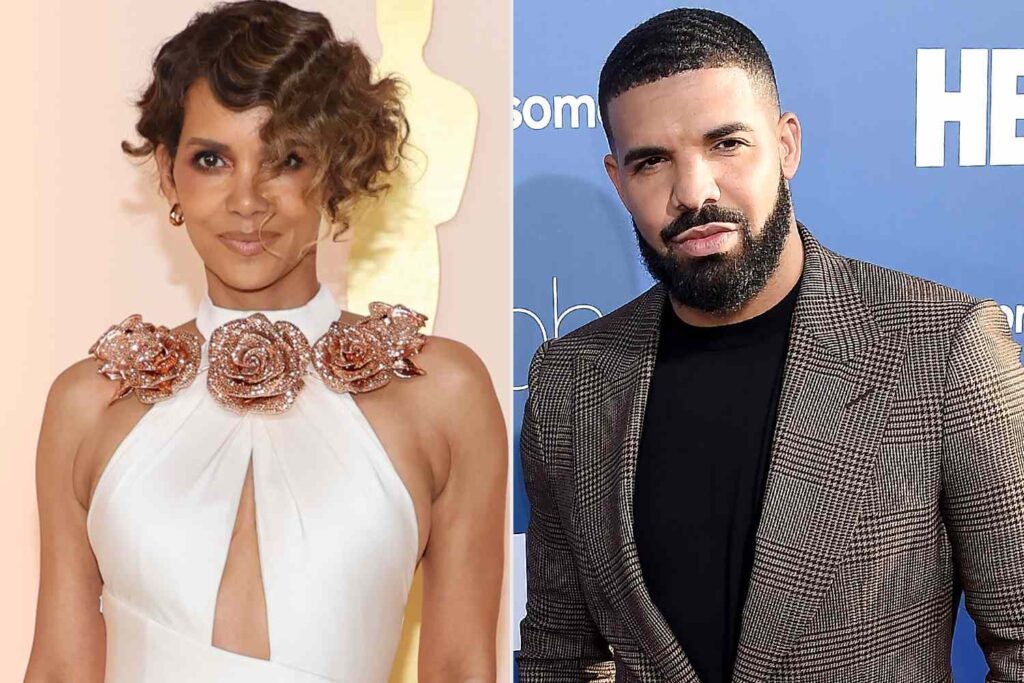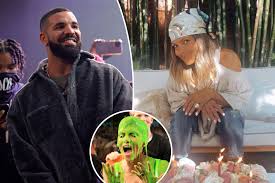Drake recently released a new single called “Slime You Out,” and he’s using a well-known image of Halle Berry from the 2012 Nickelodeon Kids’ Choice Awards for the cover. This particular photo shows Halle getting slimed, and it’s famous enough to be owned by Getty Images. Even though Drake had the right to use it, he reached out to Halle for her permission, which she denied. Despite her refusal, Drake went ahead and used the photo anyway.
Halle Berry was understandably upset and took to Instagram to voice her frustration. She felt that Drake’s gesture of asking for permission was disingenuous since he clearly had no intention of respecting her decision. Halle’s post highlighted that sometimes being the bigger person means honoring others’ wishes, even if you’re a big name like Drake.
When people talk about “sliming someone out,” they mean using someone for a casual sexual encounter without any emotional commitment. It’s not about making love or seeking a serious relationship—just a quick fling. In one notable instance, Drake reached out to a woman expecting her to agree to his advance, but she turned him down. His reaction, which was one of surprise, highlighted a lack of respect for her boundaries and marked the beginning of public tension between them.
Drake has often talked about Halle Berry in ways that have made many people uncomfortable. For example, when Halle was pregnant, he made comments about wishing she were available so he could be with her. This kind of talk crossed the line from admiration to obsession, making Halle feel uneasy and adding to their strained relationship.
This isn’t a one-time issue for Drake; he has a pattern of behaving obsessively with women in the industry. He starts with admiration and compliments, but things go south when his feelings aren’t returned. This has happened with several high-profile women, including Rihanna, Serena Williams, and Megan Thee Stallion. His initial praise often turns into negativity when he faces rejection.

Drake has shown a pattern of being overly affectionate towards women in the public eye, but his behavior often takes a turn when those women don’t return his feelings. For example, he publicly declared his love for Rihanna, praised her at award shows, and even got a tattoo inspired by her. But once it was clear Rihanna wasn’t interested, Drake distanced himself and started making subtle digs at her in his music.
The same thing happened with Serena Williams. Drake was a frequent presence at her tennis matches and spoke highly of her talent and beauty. Yet, when Serena got engaged to someone else, he stopped showing up to her matches and disappeared from her social media circles.
Megan Thee Stallion also experienced this shift. Initially, Drake praised her success and talent, but once their rumored relationship ended, he began throwing shade at her and her career.
Drake’s treatment of Halle Berry is another example. In his verse on the Migos remix of “Versace,” he rapped about wanting to have a baby with Halle Berry, which many found creepy and disrespectful. When it came to the album cover featuring a slimed Halle Berry, it was revealed that she hadn’t given permission for the use of her image. This incident added to a troubling history where Halle Berry seems to face disrespect from the industry, from being slimed at an awards show to an uninvited kiss from Adrien Brody at the Oscars. Despite Berry’s efforts to speak out, she is often dismissed or labeled as difficult.
Overall, Drake’s actions show a pattern of idolizing women and then disparaging them when they don’t reciprocate his feelings, reflecting a broader issue of respect and maturity.
Drake’s recent single, “Slime You Out,” stirred up controversy with its cover art featuring Halle Berry getting slimed at the Kids’ Choice Awards. What was intended to be a playful nod ended up being viewed as disrespectful. Many felt that Drake’s choice to use Halle’s image without her consent was a sign of his disregard for personal boundaries and respect for women.
Comments on social media reflected this sentiment. One person wrote, “Drake, when someone says no, they mean it. It’s no wonder Kendrick is calling you out.” Another said, “The way Drake used that slime cover shows a lot about his character. Nickelodeon’s influence seems to have taken a toll on him.” A third added, “He acts like he can treat any Black woman however he wants. This behavior isn’t just disrespectful; it’s persistent and concerning. He should face real consequences.”
Halle Berry didn’t stay quiet about it. She took to Instagram to address the situation, making it clear she was upset that Drake used the photo despite her refusal. Her post included a cryptic message, “Sometimes you have to be the bigger guy, even if you’re a woman,” which many took as a direct shot at Drake. When a fan asked her opinion on the situation, Halle responded, “Didn’t get my permission; that’s not cool. I thought better of him.” She explained further that Drake had asked for her permission and she had said no, but he used the photo anyway. Her reaction underscored the sense of entitlement and lack of respect in Drake’s actions.
Some people think Nickelodeon’s iconic slime might actually have a darker side, linked to humiliation rituals. According to this theory, the slime could be part of a secret practice meant to embarrass and degrade those who are slimed. Although this might sound far-fetched, recent allegations against Nickelodeon and former producer Dan Schneider have added a troubling dimension to the discussion. Schneider has faced multiple accusations of inappropriate behavior and creating a toxic work environment, which has led many to reexamine the slime tradition and its implications.
What was once seen as a fun and harmless tradition now seems more disturbing in light of these controversies. Drake’s choice to use a photo involving the slime has only fueled the debate, making his actions appear more disrespectful and unsettling, especially given the potential link to these dark theories.

Drake’s decision to use the slime photo without Halle’s consent shows a troubling lack of awareness and sensitivity. This situation highlights a broader issue in the entertainment industry, where boundaries are often crossed and women’s voices are frequently ignored. Kendrick Lamar has also been vocal about his concerns regarding Drake, accusing him of inappropriate and predatory behavior. Kendrick has pointed out patterns that others might have missed and has criticized Drake for his treatment of women.
In his song “Not Like Us,” Kendrick makes some pointed accusations, suggesting Drake has an unsettling interest in young girls with lyrics like: “Say, Drake, I hear you like them young; you better not ever go to cell block one-two. Any that talk to him and they love, just make sure you hide your little sister from him, okay?” He also makes a jab at Drake’s album title, calling it “Certified Boys” instead of “Certified Lover Boy.” Halle’s support for Kendrick adds weight to these claims, as she has personal experience with Drake and stands with Kendrick to call attention to these issues and advocate for appropriate behavior.
On the flip side, Drake’s fans are coming to his defense, saying he did nothing wrong legally by using Halle’s photo. They argue that since the image was publicly available and probably bought through the right channels, he’s in the clear. But this misses Halle’s point. It’s not just about legality—it’s about respect. Halle’s issue isn’t with whether using the photo was legal but with the fact that her clear “no” was ignored. Her criticism is about the disrespect shown when someone’s consent is brushed aside. She wants to set a higher standard, where consent and personal boundaries are truly valued.
What do you think about all this? Drop your thoughts in the comments



